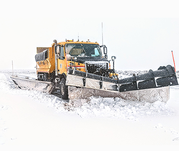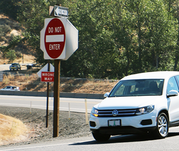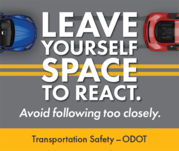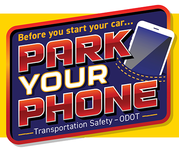|
|
|
January 2023
Driving at night is three times as risky as driving during the day, so it’s important to have headlights that do a good job of lighting up the road but without creating glare for other drivers. In Oregon, turning on your low-beam headlights any time you turn your windshield wipers on is required and can help make your vehicle more visible to other drivers, bicyclists, and pedestrians.
- Slow down. Disengage your cruise control. Most crashes occur because drivers are going too fast for weather conditions.
- Clean your headlights to ensure they are not dirty or fogged up.
- Use your low beams. High beams will disperse in thick fog or snow, making visibility worse for you and other drivers.
- If you suddenly encounter a severe loss of visibility, pull off the pavement as far as possible. Stop, turn off your lights, set the emergency brake, and take your foot off the brake to be sure the taillights are not illuminated. Turn on your emergency flashers. Never stop in the travel lanes.
- If you can't pull off the roadway, slow down, turn on your low beam headlights, and sound the horn occasionally. Use the white fog line or roadside reflectors if necessary to help guide you.
|
|
|
TripCheck

TripCheck.com is a one-stop shop for information on traveling in Oregon, with the latest conditions via road cameras, continuous winter travel updates, year-round highway construction details, and other valuable tips to get you to and from your favorite places in Oregon!
|
Winter Driving Safety

We want everyone to get where they’re going safely. Be careful when traveling over mountain passes and in wintry conditions. Pay attention to roadside message signs – they contain critical information about conditions on the road ahead, like chain requirements. Give snowplows extra space and never pass on the right. Be patient. The safest place to be when it's snowing is behind a plow. During the recent snowy and icy conditions, ODOT plow drivers saw a lot of unsafe driving – in one instance a van passed a snowplow going about 70 mph on Lava Butte even as our giant plows were struggling for traction. Drive safely around snowplows.
|
Wrong-Way Driving

Wrong-Way driver crashes both nationally and in Oregon are on the rise – about 500 people die in the U.S. each year. In Oregon, there were 711 total crashes during 2016-2020 with wrong-way drivers – 19 of those were fatal crashes. Researchers found the odds of being a wrong-way driver increased with alcohol-impairment, older age, and driving without a passenger.
There have been six reported cases of wrong way driving on Randy Papé Beltline during the last 12 months. Law enforcement is responding to improve safety in Eugene.
In southwestern Oregon, a new project is planned to reduce the numbers of wrong way drivers at I-5 interchanges by evaluating each interchange connection and applying relatively low-cost treatments such as increased signing and striping. At certain high-risk interchanges, more expensive measures will be considered such as increased illumination, automated warning system and overhead signing.
|
Rules of the Road – Tailgating

When drivers tailgate, they significantly reduce their stopping distance – the distance needed to come to a complete and safe stop. With more cars on the road and people in a hurry, tailgating is a big problem. Maintaining a safe distance from the vehicle in front of you gives you a better view of the road and other traffic, so you can anticipate problems and have more time to react. At a minimum, you should allow two seconds of space between your car and the one in front of you. Four seconds is an even better idea.
|
Driven to Distraction

A recent Insurance Institute for Highway Safety (IIHS) survey of 2,000 drivers found that nearly two-thirds reported performing one or more distracting activities most or every time they drove over the past 30 days. The research also revealed that gig-economy workers were more than twice as likely as other drivers to engage in distracting activities and nearly four times as likely to regularly use smartphone apps while driving. Parents are also nearly 50 percent more prone to routinely making video calls, checking weather reports and other types of smartphone-enabled distractions than drivers without children 18 or younger.
|
Walking, Rolling, and Public Transportation

ODOT’s new Innovative Mobility Program will be sending more than $87,000 out the door in the next few weeks for helmets and locks, transit passes, adaptive bikes, and much more.
|
Resources
|